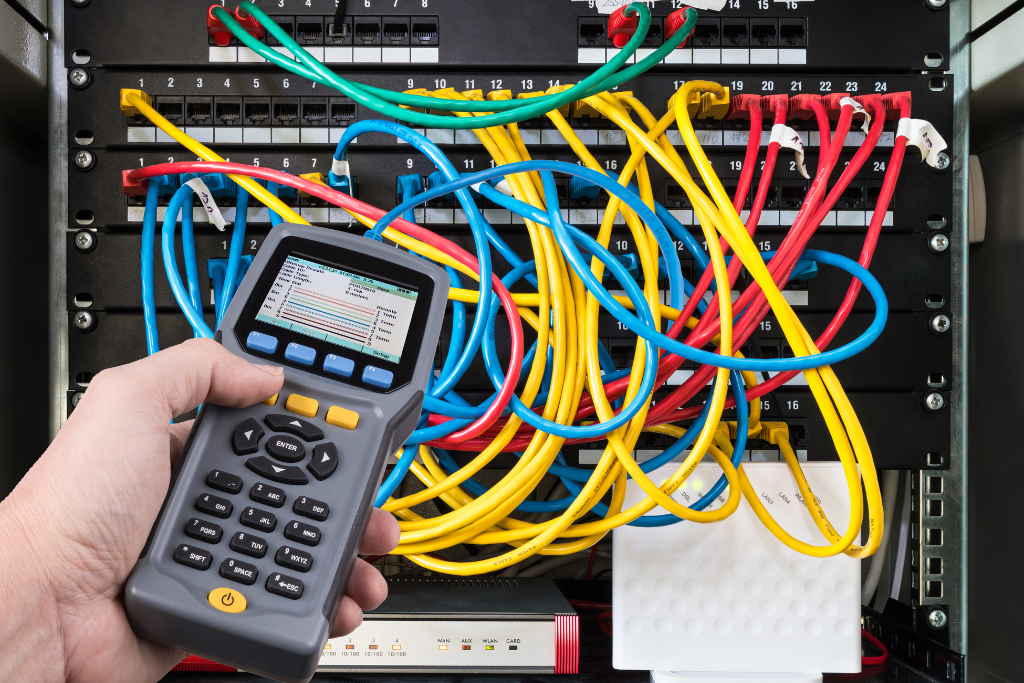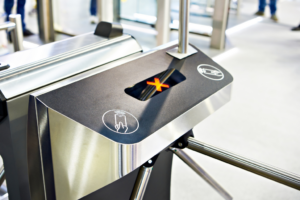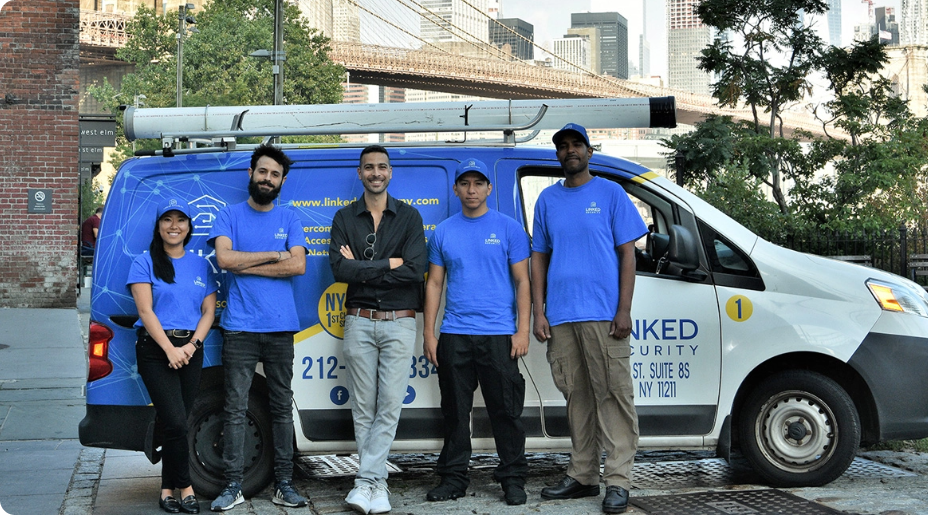Linked Security NY: Leading the Way in Structured Cabling Solutions

Unlock the power of structured cabling with our ultimate guide. Learn the basics, installation tips, and why it’s essential for your network.
Have you ever wondered how your internet connection works seamlessly across multiple devices? How is it possible for data to travel from one end of the world to another in a matter of seconds? The answer lies in structured cabling.
Structured cabling is a standardized approach for organizing network infrastructure that provides a solid foundation for efficient and scalable networks. It involves the installation of organized cables, such as ethernet cables, cat 5e, and patch cables, along with the use of telecommunications enclosures and wiring in designated areas called telecommunications rooms. These cables are strategically placed to create vertical and horizontal connections known as backbone and point cabling.
As someone who has experienced the frustrations of unreliable network connections firsthand, I can attest to the importance of structured cabling solutions. It ensures that communication technologies like telephones, computers, and other devices can seamlessly connect within an organization or building. By following specific cabling standards, structured cabling companies ensure that data flows smoothly through organized cable pathways.
Importance of Structured Cabling in Networking
Structured cabling plays a crucial role in ensuring reliable connectivity throughout a network. It provides a solid foundation for the smooth transmission of data and facilitates efficient communication between devices.
Ensures Reliable Connectivity Throughout the Network
One of the primary benefits of structured cabling is its ability to ensure reliable connectivity across all network devices. By utilizing standardized cabling techniques, such as Ethernet, fiber optic, or coaxial cables, structured cabling minimizes signal interference and ensures consistent data transmission speeds. This reliability is particularly important in today’s fast-paced digital landscape where businesses heavily rely on seamless connectivity for their day-to-day operations.
Structured cabling also eliminates the need for multiple wiring systems within an organization. With a centralized infrastructure, companies can avoid messy tangles of cables that often lead to connectivity issues. Instead, they can enjoy a streamlined setup that allows for efficient troubleshooting and maintenance.
Facilitates Easy Troubleshooting and Maintenance
When network issues arise, structured cabling simplifies the troubleshooting process by providing clear organization and labeling. Each cable is neatly organized into different categories or zones, making it easier for technicians to identify and resolve any problems quickly. This reduces downtime significantly as IT personnel can pinpoint issues faster without wasting time untangling cables or deciphering complicated setups.
Moreover, structured cabling enables easy scalability as businesses grow or adapt to technological advancements. Adding new devices or expanding the network becomes hassle-free since everything is already neatly organized within the infrastructure. This flexibility ensures that businesses can keep up with evolving technology without having to overhaul their entire network system.
Enables Future-Proofing and Adaptability to Technological Advancements
In today’s rapidly advancing technological landscape, it is crucial for businesses to future-proof their networks. Structured cabling provides the necessary foundation for accommodating new devices, applications, and bandwidth requirements. With its standardized design, it allows for seamless integration of new technologies as they emerge.
Structured cabling also enables businesses to adapt to changing needs and trends without significant disruptions. Whether it’s implementing cloud-based solutions, supporting Internet of Things (IoT) devices, or upgrading network speeds, structured cabling provides the flexibility required to stay ahead in a competitive market.
Components of Structured Cabling Systems
Structured cabling systems are the backbone of any telecommunications cabling infrastructure. They provide a structured and organized approach to connecting various devices and equipment within a building or facility. Let’s delve into the key components that make up these robust systems.
Backbone Cabling
The first component we will discuss is backbone cabling. This vital part of the structured cabling system connects different areas such as equipment rooms, telecommunication spaces, and entrance facilities. It serves as the main pathway for data communications equipment to transmit information throughout a building. Backbone cabling typically consists of high-capacity cables, such as fiber optic or copper cables, capable of handling large volumes of data traffic over long distances.
Horizontal Cabling
Another crucial element in structured cabling systems is horizontal cabling. This type of cabling links work areas, including offices, cubicles, and conference rooms, to telecommunication rooms or closets. It enables seamless connectivity between end-user devices and the central network infrastructure. Typically, twisted pair cables are used for horizontal cabling due to their cost-effectiveness and compatibility with various applications.
Patch Panels, Connectors, and Cables
Patch panels play an essential role in structured cabling systems by providing a centralized point for connecting various cables within a telecommunication room. These panels allow easy management and organization of multiple connections while facilitating quick troubleshooting or reconfiguration when necessary.
Connectors are vital components that ensure secure connections between different cables or devices in the system. They come in various types depending on the cable being used – from RJ-45 connectors commonly used with twisted pair cables to SC or LC connectors utilized with fiber optic cables.
Cables themselves form the core foundation of any structured cabling system. Different cable types serve specific purposes within the overall infrastructure. Twisted pair cables are commonly employed for voice and data transmission due to their flexibility and cost-effectiveness. Fiber optic cables, on the other hand, provide high-speed and long-distance transmission capabilities, making them ideal for applications requiring immense bandwidth.
Work Area Components
Work area components are crucial parts of structured cabling systems as they directly connect end-user devices to the network. These components include wall outlets or faceplates where cables terminate, allowing users to plug in their devices conveniently. Work area components ensure efficient connectivity and enable seamless communication between users and the central network infrastructure.
Telecommunication Rooms
Telecommunication rooms serve as central hubs within a building’s structured cabling system. They house various equipment such as patch panels, switches, routers, and servers that facilitate data transmission throughout the network. These rooms are strategically located to minimize cable lengths and optimize performance.
Role of Components in Creating Reliable Network Infrastructure
The components of a structured cabling system play a crucial role in creating a reliable network infrastructure. From patch panels to connectors and high-quality cables, each element contributes to ensuring secure and efficient data transmission for various network applications.
Patch Panels: Flexible Connections between Devices and Cables
Patch panels act as the central hub for connecting devices and cables within a network infrastructure. These components provide flexibility by allowing easy reconfiguration or expansion of the network without disrupting existing connections. With patch panels, IT teams can quickly add or remove devices, making it convenient to manage changes in the network layout.
By using patch panels, technicians can neatly organize cables into different ports, ensuring an organized and tidy setup. This organization not only simplifies troubleshooting but also reduces the risk of accidental disconnections. Whether it’s an office environment or a data center, patch panels are essential for maintaining orderliness and efficiency within the network infrastructure.
Connectors: Secure and Efficient Data Transmission
Connectors form the essential link between cables and devices in a structured cabling system. They ensure secure connections while facilitating efficient data transmission across networks. By employing high-quality connectors, organizations can minimize signal loss and maintain consistent performance levels.
Various types of connectors exist to accommodate different cable types such as Ethernet, fiber optic, or coaxial cables. For instance:
- RJ45 connectors are commonly used with Ethernet cables.
- LC or SC connectors are prevalent in fiber optic networks.
- BNC connectors find application in coaxial cable setups.
Choosing the appropriate connector type based on specific requirements is crucial for establishing reliable connections that meet desired performance standards.
High-Quality Cables: Minimizing Signal Loss and Interference
The quality of cables used within a structured cabling system significantly impacts overall network performance. High-quality cables minimize signal loss and interference, ensuring reliable data transmission throughout the infrastructure.
In terms of copper-based Ethernet cables, Category 6 (Cat6) and Category 6a (Cat6a) cables are widely used due to their enhanced bandwidth capabilities. These cables provide improved transmission speeds and reduced crosstalk, making them ideal for high-speed data transfers.
For long-distance or high-bandwidth applications, fiber optic cables offer superior performance. They transmit data using light signals, providing faster speeds and immunity to electromagnetic interference. Single-mode and multi-mode fibers cater to different network requirements, with single-mode being suitable for longer distances and multi-mode for shorter distances.
Choosing the right type of cable based on network needs is essential for achieving optimal performance and reliability.
Guide for Installation of Structured Cabling Systems
Planning cable routes is a crucial step in the installation of structured cabling systems. It is important to consider both current needs and potential future growth when determining the path for your cables. By carefully planning the cable routes, you can ensure efficient connectivity throughout your organization.
Following industry standards for cable installation techniques is essential to ensure optimal performance and minimize potential issues. These standards provide guidelines on how to properly install and secure cables, ensuring they are not subjected to unnecessary stress or interference. Adhering to these standards will help maintain the integrity of your structured cabling system.
Properly labeling cables is another key aspect of installation that often gets overlooked but plays a significant role in maintenance and troubleshooting. By labeling each cable correctly, you can easily identify them during maintenance tasks or when resolving connectivity issues. This simple step saves time and reduces frustration when dealing with a large number of interconnected cables.
There are several components to consider. The equipment room serves as the central hub where all the connections converge. It houses various networking devices such as switches, routers, and servers that facilitate data transmission across different departments or areas within an organization.
Patch panels are an integral part of any structured cabling system as they provide a centralized location for connecting patch cables from various devices to different ports on the patch panel itself. These panels make it easier to manage connections and allow for flexibility when reconfiguring network setups.
To ensure a successful installation, it is advisable to contact corporate technology solutions specializing in structured cabling design and implementation. They have expertise in assessing your specific requirements and designing a customized solution tailored to your organization’s needs.
The main distribution area (MDA) is another critical component in structured cabling systems. It acts as a central point where all incoming communication lines connect before being distributed throughout the building or facility. Properly designing the MDA ensures efficient distribution of signals to various endpoints, minimizing signal loss and maintaining network performance.
The Significance of Structured Cabling in Modern Networks
Structured cabling plays a crucial role in modern networks, supporting high-speed data transfer required by today’s applications. With the increasing demand for seamless connectivity and efficient data transmission, organizations rely on structured cabling to ensure smooth operations and optimal performance. Let’s delve into the significance of structured cabling and how it enhances network functionality.
High-Speed Data Transfer
In the digital age, where businesses heavily rely on technology for their day-to-day operations, fast and reliable data transfer is paramount. Structured cabling provides a robust foundation for high-speed data transmission within an organization’s network infrastructure. By utilizing standardized cable infrastructure, such as Ethernet cables, companies can achieve faster data transfer rates compared to traditional wiring systems.
Integration of Various Systems
Gone are the days when voice, video, and data were handled separately on different networks. With structured cabling, all these systems can seamlessly integrate onto a single network platform. This integration simplifies management and maintenance while reducing costs associated with maintaining multiple networks. Companies can now consolidate their telecommunications needs by leveraging structured cabling solutions that support various services simultaneously.
Enhanced Network Performance
A well-designed structured cabling system significantly improves overall network performance. By eliminating unnecessary clutter and ensuring proper cable management, signal interference is minimized or eliminated altogether. This leads to improved signal quality and reduced downtime due to network issues caused by tangled or damaged cables.
Moreover, organized cabling infrastructure enables efficient troubleshooting processes as technicians can quickly identify and rectify any faults within the network layout. This streamlined approach reduces downtime further by minimizing the time spent diagnosing and resolving connectivity issues.
Standardization for Efficiency
With standardization being a key aspect of structured cabling, companies benefit from increased efficiency across their corporate technology solutions. Standardized components allow for easier scalability as businesses grow or adapt to changing needs. Upgrading or expanding the network becomes more straightforward and cost-effective when there is a uniform cabling infrastructure in place.
Supporting Data Centers
Structured cabling is particularly vital in data centers, where large volumes of data are processed and stored. These facilities require a reliable and efficient cabling system to handle the immense data transfer demands. By implementing structured cabling solutions, data centers can ensure seamless connectivity between servers, storage systems, switches, and other critical components.
Linked Security NY Services in Structured Cabling
1. Expertise in High-Speed Data Transfers:
Linked Security NY stands at the forefront of structured cabling solutions, championing the digital age’s need for rapid and dependable data transmission. Recognizing the pivotal role that structured cabling plays in achieving swift data transfer rates, the firm offers tailored solutions that surpass traditional wiring systems in both reliability and efficiency. Whether it’s a burgeoning startup or a vast enterprise, Linked Security NY ensures that every organization is equipped to handle modern data demands seamlessly.
2. Integrated Solutions for Diverse Systems:
Bridging the gap between voice, video, and data transmissions, Linked Security NY’s structured cabling solutions empower businesses to merge these systems onto one cohesive network platform. The expertise lies not just in integrating these systems, but in doing so in a way that streamlines management, cuts down maintenance challenges, and significantly trims operational costs. The value proposition is simple: a single, unified platform that meets a wide array of telecommunication needs without the complications of managing disparate networks.
3. Commitment to Quality and Standardization:
Maintaining a standardized approach, Linked Security NY emphasizes efficiency across all their structured cabling projects. Their commitment to uniformity ensures that businesses can scale or adapt with minimal hassle, making network expansions or upgrades a straightforward endeavor. This standardization, coupled with their focus on quality, ensures that businesses witness enhanced network performance, minimized downtimes, and optimal signal quality, regardless of their scale or domain.
Structured Cabling FAQs
What are the benefits of using structured cabling?
Structured cabling offers numerous benefits such as improved network performance, scalability for future growth, easier troubleshooting and maintenance, reduced downtime, simplified management, and support for multiple applications over a single infrastructure.
How long does it take to install a structured cabling system?
The time required for installing a structured cabling system depends on factors like the size of the installation area and the complexity of the network requirements. However, it typically takes several days or weeks to complete an installation project.
Can I upgrade an existing network with structured cabling?
Yes, you can upgrade an existing network with structured cabling. It is a flexible solution that can be implemented in both new and existing buildings without disrupting the current network infrastructure.
What certifications are available for structured cabling professionals?
There are several certifications available for structured cabling professionals, such as the BICSI Installer, Technician, and Designer certifications, as well as the Panduit Certified Installer program.
How much does a structured cabling system cost?
The cost of a structured cabling system can vary depending on factors like the size of the installation area, the complexity of the network requirements, and chosen components. It is best to consult with a professional installer or integrator to get an accurate estimate based on your specific needs.





